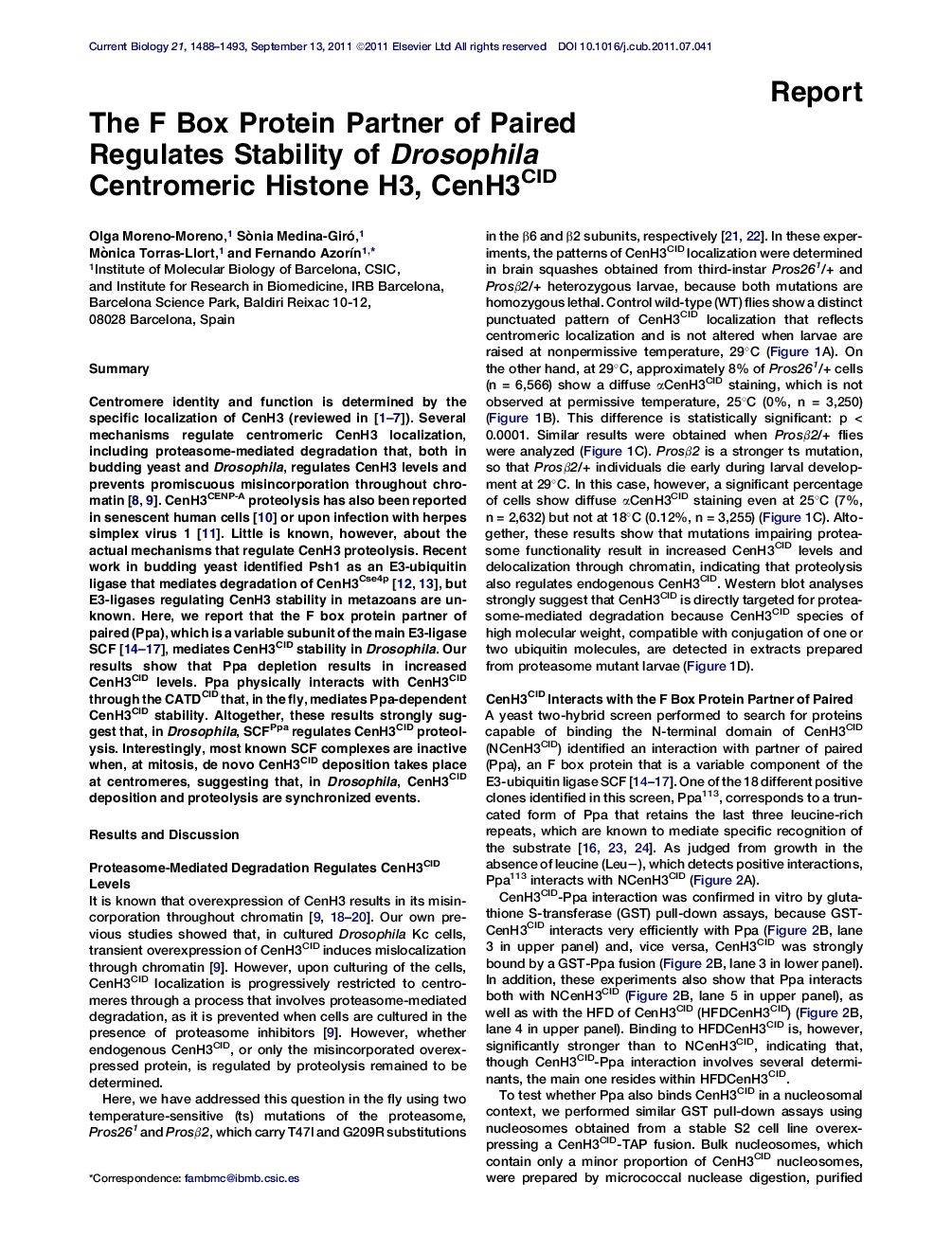| Article ID | Journal | Published Year | Pages | File Type |
|---|---|---|---|---|
| 2043120 | Current Biology | 2011 | 6 Pages |
SummaryCentromere identity and function is determined by the specific localization of CenH3 (reviewed in [1, 2, 3, 4, 5, 6 and 7]). Several mechanisms regulate centromeric CenH3 localization, including proteasome-mediated degradation that, both in budding yeast and Drosophila, regulates CenH3 levels and prevents promiscuous misincorporation throughout chromatin [ 8 and 9]. CenH3CENP-A proteolysis has also been reported in senescent human cells [10] or upon infection with herpes simplex virus 1 [11]. Little is known, however, about the actual mechanisms that regulate CenH3 proteolysis. Recent work in budding yeast identified Psh1 as an E3-ubiquitin ligase that mediates degradation of CenH3Cse4p [ 12 and 13], but E3-ligases regulating CenH3 stability in metazoans are unknown. Here, we report that the F box protein partner of paired (Ppa), which is a variable subunit of the main E3-ligase SCF [ 14, 15, 16 and 17], mediates CenH3CID stability in Drosophila. Our results show that Ppa depletion results in increased CenH3CID levels. Ppa physically interacts with CenH3CID through the CATDCID that, in the fly, mediates Ppa-dependent CenH3CID stability. Altogether, these results strongly suggest that, in Drosophila, SCFPpa regulates CenH3CID proteolysis. Interestingly, most known SCF complexes are inactive when, at mitosis, de novo CenH3CID deposition takes place at centromeres, suggesting that, in Drosophila, CenH3CID deposition and proteolysis are synchronized events.
► The SCF component partner of paired mediates CenH3CID stability in Drosophila ► Ppa physically interacts with CenH3CID through the CATDCID ► CATDCID mediates Ppa-dependent CenH3CID stability
